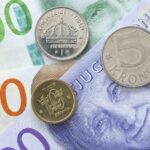On Wednesday (in GMT terms) gold for delivery in December traded within the range of $1,261.1-$1,274.4. Futures closed at $1,269.9, edging up 0.55% compared to Tuesday’s close. It has been the 170th gain in the past 362 trading days and also a third consecutive one. The daily high has been a level unseen since October 5th, when a high of $1,279.4 a troy ounce was registered. The precious metal has pared its drop to 3.58% so far during the current month, after gaining 0.43% in September.
On the Comex division of the New York Mercantile Exchange, gold futures for delivery in December were inching up 0.02% on Thursday to trade at $1,270.1 per troy ounce. The precious metal went up as high as $1,274.1 during early Asian trade, while the current daily low was at $1,268.7 per troy ounce, recorded during the early phase of the European trading session.
The US Dollar Index, a gauge reflecting the relative strength of the greenback against a basket of 6 other major currencies, was edging up 0.12% on the day at a level of 97.99, after going up as high as 98.09 earlier. The gauge has increased its advance to 2.73% so far in October, following a 0.65% drop in September.
Yesterday gold futures rose a third straight day, touching a two-week high, while US bond yields continued to ease from recent four-month highs, as the latest report on US consumer price inflation still weighed on sentiment. On Tuesday the US Bureau of Labor Statistics said annual core consumer price inflation slowed down to 2.2% in September from 2.3% in August.
However, market players seemed to have retained optimism regarding the Feds future policy stance, especially following what may be the clearest signal from one of the most influential bank officials, William Dudley. During a dinner gathering at the Lotos Club on Wednesday, the Fed President for New York, who also is a permanent voter on FOMC policy, said the target range for the federal funds rate may be raised in 2016, in case US macroeconomic development keeps following the current path. “If the economy stays on its current trajectory I think … well see an interest rate hike later this year,” Dudley said, cited by Reuters, while also adding that a 0.25% increase in borrowing costs “is not really that big a deal”, as the economy is “reasonably close” to the Banks objectives regarding employment and inflation.
Dudley is expected to attend a panel discussion with Hong Kong Monetary Authority’s Norman Chan and Bank of England’s Nemat Shafik, at a workshop, which is to examine culture and behavior in the financial services industry in New York. The event is scheduled at 12:30 GMT today.
Market participants will be also paying a close attention to another set of macro data, coming out from the United States. A weekly report by the Department of Labor may show that the number of people in the country, who filed for unemployment assistance for the first time during the business week ended on October 14th, rose to 250 000, according to market consensus, from 246 000 in the preceding week. The latter has been the lowest number of claims since 1973. In case todays figure met expectations or was even higher, this would have a moderate bearish effect on the US dollar and a moderate bullish effect on gold. The weekly report is due out at 12:30 GMT as well.
A separate piece of data by the National Association of Realtors (NAR) may show that the number of previously owned homes sold in the United States rose at a monthly 0.4% to a level of 5.35 million in September. During the preceding month, sales were 0.9% lower to reach 5.33 million, which has been the lowest figure since February. In case the index of sales rose at a steeper monthly rate than anticipated, this would have a moderate bullish effect on the US dollar and the opposite effect on gold. The report is to be released at 14:00 GMT.
Meanwhile, investor medium-term rate hike expectations re-approached four-month highs.
According to CME’s FedWatch Tool, as of October 19th, market players saw an 8.3% chance of a rate hike occurring at the Federal Reserve’s policy meeting in November, or unchanged compared to the prior eight business days, and a 69.5% chance of a hike in December, up from 65.1% in the preceding business day. As far as the February 1st 2017 meeting is concerned, the probability of such a move was seen at 70.8% on October 19th, up from 67.2% in the prior business day.
Daily, Weekly and Monthly Pivot Levels
By employing the Camarilla calculation method, the daily levels of importance for gold are presented as follows:
R1 – $1,271.1
R2 – $1,272.3
R3 (Range Resistance – Sell) – $1,273.6
R4 (Long Breakout) – $1,277.2
R5 (Breakout Target 1) – $1,281.5
R6 (Breakout Target 2) – $1,283.3
S1 – $1,268.7
S2 – $1,267.5
S3 (Range Support – Buy) – $1,266.2
S4 (Short Breakout) – $1,262.6
S5 (Breakout Target 1) – $1,258.3
S6 (Breakout Target 2) – $1,256.5
By using the traditional method of calculation, the weekly levels of importance for gold are presented as follows:
Central Pivot Point – $1,256.4
R1 – $1,265.9
R2 – $1,276.3
R3 – $1,285.8
R4 – $1,295.3
S1 – $1,246.0
S2 – $1,236.5
S3 – $1,226.1
S4 – $1,215.7
In monthly terms, for the yellow metal we have the following pivots:
Central Pivot Point – $1,326.7
R1 – $1,348.0
R2 – $1,378.8
R3 – $1,400.1
R4 – $1,421.3
S1 – $1,295.9
S2 – $1,274.6
S3 – $1,243.8
S4 – $1,212.9





